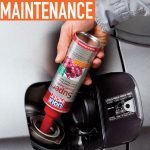At Muncie Power Products, troubleshooting plays a pivotal role in setting the company apart from its competitors. And, it’s a service applicable to all of the company’s product lines and available to all Muncie Power customers over the phone and in the field.
Heading up field service troubleshooting efforts is product support technician Doug Winchester and the Technology Solutions Group (TSG). While Winchester spends the majority of his time assisting customers with snow and ice applications, he also troubleshoots for customers with utility, refuse, fire and rescue, tow and recovery, and dump applications.
Winchester, who spends roughly half of his time traveling across the country assisting the company’s customers, found over the years that for some companies with similar products, this type of customer support is nonexistent.
So what does troubleshooting entail at Muncie Power Products?
THE STEPS
There are four steps to general troubleshooting that Winchester and TSG follow when assisting customers. According to Winchester, these steps include collecting all available information; identifying the problem; working through the simplest solutions first—checking for the obvious; and if this doesn’t resolve the issue, working through the hydraulic system.
“(The steps) can be (applied) to all of our product lines,” Winchester says. “It’s more in-depth on the snow and ice side of it because there’s more components, but you can troubleshoot a pump and a PTO with the same procedure.”
It’s important to remember that information received can be secondhand, so the more information collected, the better. To collect this information, Winchester uses a variety of instruments while working through the steps to diagnose the issue. These instruments allow Winchester or the user to gain insight into the components and system in order to pinpoint the exact problem.
Some of these tools include high-resolution data acquisition equipment, oscilloscopes, multimeters, flow meters, amp clamps, pressure gauges, infrared guns, dial indicators, and more. These tools are helpful for not only a complex problem but a simple one such as a hydraulic circuit not building pressure, which could be caused by a number of issues.
Winchester realizes that the process can become a bit repetitive, but as he described, it’s like encountering a computer issue—sometimes all it takes is a reboot or a reminder to try something simple.
Winchester shared that even if he’s 99 percent sure he knows what the issue is, he’ll go through the steps just like he advises the customer. Not only does going through these steps help the customer understand what’s going on but ensures that the issue isn’t something simple that was overlooked.
PHONE OR FIELD
According to Winchester, a lot of troubleshooting can be handled over the phone—which is why it’s important to follow the proper chain of procedure for troubleshooting. Resolving the issue over the phone is often quicker for the customer than sending out a product support technician.
Over the phone, the resolution can be immediate or a part shipped faster than the time it would take for a product support technician to schedule a trip, book travel arrangements, and visit the customer. That’s not to say that all issues can be resolved over the phone. At times, a field service call is necessary.
Customers are not always as familiar or comfortable with the truck’s hydraulic system and as a result, are understandably apprehensive to work on it. But simply stepping in and fixing the issue without explaining does little in the way of helping prepare the customer to handle issues in the future. For this reason, it’s critical to explain the issue and its solution to the customer regardless of whether troubleshooting takes place by phone or in the field, Winchester explains.
“I want to bring them over, show them what I’m doing, show them the steps that I’m doing so that they can learn to do the troubleshooting themselves and get them confident to start fixing (the system),” he says.
TEACHING CUSTOMERS
This builds confidence for the customer in their abilities and also in Muncie Power Products’ support and service. The ability to troubleshoot the system is beneficial for any customer, but perhaps especially for those in the snow and ice market where resolving issues is often of the essence during winter.
“Normally with snow and ice, when they run into an issue it’s during the wintertime, and the truck goes down, there’s snow on the roads, ice on the roads. So the big benefit for them is to learn how to troubleshoot it, know how to fix it, and put the truck back out on the road quicker,” he says.
One of the most common issues Winchester and TSG find are with the settings on the snow and ice systems sent out to customers. This is because every system is sent out with basic settings in place so that the company and the customer know everything will work; however, the settings are not necessarily configured properly to what the customer needs for their application. In which case, Winchester and the team assist the customer in configuring the system to meet their needs.
“We’ll work though the trim (configuration) settings, salt calibration, liquid calibration, and get the truck properly trimmed out right,” Winchester says in regards to handling this common issue.

STILL AN ISSUE?
Sometimes, even with troubleshooting, the issue cannot be readily identified and resolved. When this happens, Winchester and TSG gather as much information and data as possible and then reach out to other members of the Muncie Power team for support to help find a solution. With the help of Muncie Power’s customer service team, product managers, and engineering team, Winchester and the team are able to determine a solution from the information and data.
These instances don’t stop Winchester or the team from doing everything they can to help the customer identify the issue—even when all Muncie Power’s products are found to be functioning properly.
Once Winchester was helping a customer who had a system configured to disengage the power take-off during certain conditions. This way if they broke a line or lost oil, the PTO and the pump would shut off so that oil wasn’t pumping out onto the ground or overheating the system. But after the PTO shutoff module was installed, the customer reported the power take-off would randomly shut off during operation.
Working with the customer in person, he went through the process of checking and diagnosing the system and its circuits. They found that there was no issue with the PTO and system.
Even though both the PTO and system were working properly, Winchester continued to troubleshoot with the customer to determine what was causing the issue. They found that when the transmission would hit roughly 1,800 rpm, it would cause the PTO to turn off. In this instance, the power take-off was shutting off due to a misprogrammed transmission control module.
With work trucks, it’s important to remember there are often many components from different vendors working together to perform the application. For this reason, it’s important to check the system’s circuits because the issue could be in how these components work together.
WHY IT’S IMPORTANT
Work trucks and the applications they carry out every day play a critical role in our society, especially when it comes to those applications concerning public safety and when time is of the essence. Troubleshooting not only makes it possible to help customers potentially eliminate downtime and get their truck back on the road, but it allows for the opportunity to help teach customers and empower them to resolve issues that may arise in the future.
“I truly believe (troubleshooting has) helped us retain customers,” he says. “They know they’ll stick with Muncie because they know the service we’ll provide.”
Muncie Power Products offers training regarding troubleshooting to customers, carried out by Winchester and the Technology Solutions Group.
MODERN WORKTRUCK SOLUTIONS: OCTOBER 2018 ISSUE
Did you enjoy this article?
Subscribe to the FREE Digital Edition of Modern WorkTruck Solutions magazine.





